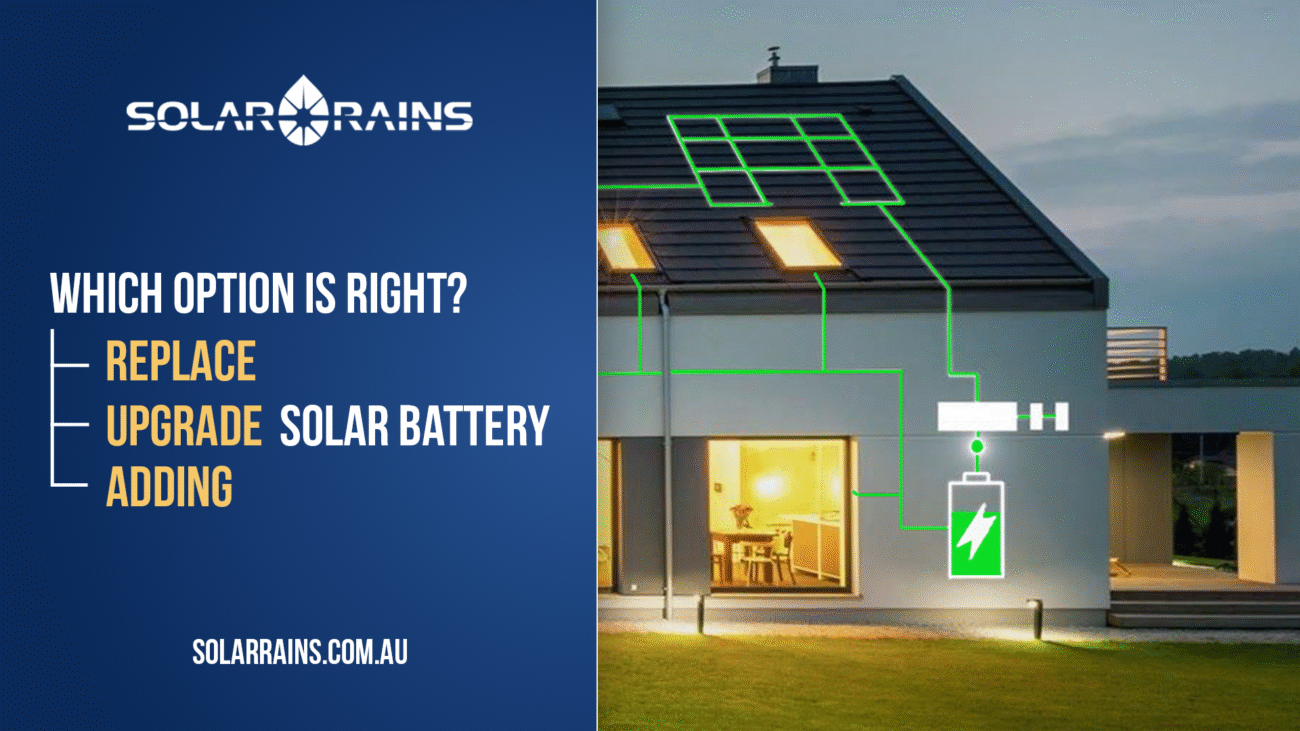Introduction
Australia continues to lead the world in rooftop solar adoption, and solar batteries are playing a crucial role in maximizing the benefits of this clean energy. According to the Clean Energy Council’s Rooftop Solar & Storage Report (Jan–Jun 2025), 4.2 million Australian households and businesses have installed rooftop solar, contributing 12.8% of all electricity generation in the first half of the year.
While this growth is impressive, the next frontier lies in unlocking solar access for nearly 3 million Australian households that are renters, ensuring that clean energy benefits are inclusive and equitable. This article analyzes the current trends, benefits, and policy opportunities for rooftop solar and batteries in Australia in 2025.
Australia’s Rooftop Solar & Battery Trends

Rapid Adoption Across Households
The adoption of rooftop solar systems in Australia has accelerated in recent years:
- 4.2 million households and businesses now generate electricity from rooftop solar.
- Increasing uptake of solar batteries allows households to store excess energy for night-time use.
- Larger and more efficient solar battery storage systems are being installed in both residential and commercial sectors.
Batteries as a Key Component
Solar batteries are transforming how Australians use electricity. By storing excess energy generated during the day, they allow households to:
- Reduce reliance on the grid
- Shift energy use to peak periods
- Save money on high-cost electricity
This shift is especially important in high-usage households and areas with time-of-use tariffs.
Benefits of Rooftop Solar & Solar Batteries
For Homeowners
Homeowners benefit significantly from combining rooftop solar with a solar battery:
- Lower Electricity Bills
- Stored solar energy reduces dependence on grid electricity during peak hours.
- Households can save hundreds of dollars annually, particularly in states with high electricity prices.
- Energy Independence
- Batteries allow homeowners to use their own solar energy, rather than relying entirely on grid power.
- Provides a measure of security against rising energy costs and blackouts.
- Environmental Impact
- Using stored solar energy reduces reliance on fossil-fuel-generated electricity.
- Contributes to a reduction in greenhouse gas emissions, aligning with Net Zero 2050 goals.
- Long-Term Investment
- Solar panels and batteries increase property value and provide a stable ROI over the system’s lifespan.
- Batteries enhance self-consumption, maximizing the financial benefit of rooftop solar.
For Renters
Renters have historically been excluded from rooftop solar benefits, but programs are emerging to change that:
- Solar energy can be installed on shared rooftops managed by strata or building management.
- Each apartment receives its share of generated electricity, reducing bills without individual rooftop ownership.
- Renters gain access to solar battery-ready systems, enabling storage of solar energy for night-time use and blackout protection.
This represents a major step toward energy equity, ensuring all Australians, not just homeowners, can benefit from renewable energy.
Policy Opportunities Driving Adoption
Government incentives and programs are crucial for accelerating solar battery adoption:
Small-scale Renewable Energy Scheme (SRES)
- Offers Small-scale Technology Certificates (STCs) to offset upfront costs.
- Reduces the initial expense of installing rooftop solar and batteries.
Cheaper Home Batteries Program
- Provides average 30% rebates for eligible batteries.
- Targets households, small businesses, and community groups.
- Supports uptake among renters and apartment residents, bridging the gap for multi-unit dwellings.
State Programs
- Victoria’s Solar for Apartments: supports shared rooftop solar installations in strata buildings.
- Other states are introducing rebates or low-interest loans to encourage solar battery adoption.
Impacts on the Grid
- By increasing battery storage capacity, these policies reduce peak load on the electricity grid.
- Encourages virtual power plant participation, where excess stored energy can be sold back to the grid.
- Promotes grid resilience and stability as more renewable energy is integrated.
Challenges and Considerations
Despite the growth, there are challenges for households and businesses considering solar batteries:
- Upfront Costs
- Solar battery systems can cost $8,000–$15,000 depending on capacity and brand.
- Rebates and incentives significantly reduce costs but vary by state.
- Compatibility
- Existing rooftop solar systems may need battery-ready inverters.
- Older systems may require additional equipment for seamless integration.
- Maintenance & Lifespan
- Lithium-ion batteries typically last 10–15 years.
- Proper installation and monitoring are critical for performance and safety.
- Policy Complexity
- Different states have varying rebates and regulations.
- Renters may need cooperation from owners corporations for shared rooftop installations.
Featured Solar Battery Solutions
Solar Rains provides reliable solar battery systems tailored for Australian conditions:
Swatten Stackable Battery
- Capacity: 9.6kWh–12.8kWh
- Modular design for scaling storage
- Ideal for households seeking battery backup and maximum self-consumption
Deye 6.14kWh Battery
- Compact wall-mounted design
- High efficiency and safety features
- Compatible with hybrid inverter systems
Sofar PowerAll All-in-one ESS
- Modular, scalable system with IP65 rating
- Suitable for residential and commercial applications
- Ideal for sustainable, long-term energy storage
For more options, visit Solar Rains Residential Battery Collection.
The Future of Rooftop Solar & Batteries in Australia
Expanding Access to Renters
- Nearly 3 million renter households have yet to access rooftop solar.
- Shared rooftop and community battery programs are the next frontier for inclusive solar adoption.
Technological Advancements
- Higher-capacity batteries for homes and commercial properties.
- Improved efficiency and longer lifespan for lithium-ion systems.
- Smart monitoring systems allow real-time tracking of solar and battery performance.
Integration with the Grid
- Increasing number of Virtual Power Plants (VPPs) using distributed solar batteries.
- Reduces stress on the grid during peak demand.
- Enables participation in energy trading for households and businesses.
Conclusion: Solar Batteries as a Response to Rising Electricity Prices
As electricity prices continue to rise in 2025, Australians are seeking ways to reduce costs, increase energy independence, and contribute to a cleaner environment. Solar batteries, combined with rooftop solar, provide a comprehensive solution:
- Reduce electricity bills by storing solar power for peak periods.
- Enhance energy security during blackouts.
- Increase sustainability and reduce carbon footprint.
- Empower renters and apartment residents to access clean energy.
With government incentives, growing availability of solar battery systems, and technology advancements, now is the perfect time to invest in solar batteries to future-proof your energy needs.
FAQs
Savings vary by household, but many homeowners can reduce bills by hundreds of dollars per year, especially with time-of-use tariffs.
Yes. Programs like Victoria’s Solar for Apartments allow renters to access solar energy via shared rooftops and battery-ready systems.
Modern lithium-ion batteries typically last 10-15 years, depending on usage cycles.
Yes. Federal and state programs, including SRES and Cheaper Home Batteries, reduce upfront costs significantly.
Yes, provided your system has backup capability, the battery will supply power during grid outages.










